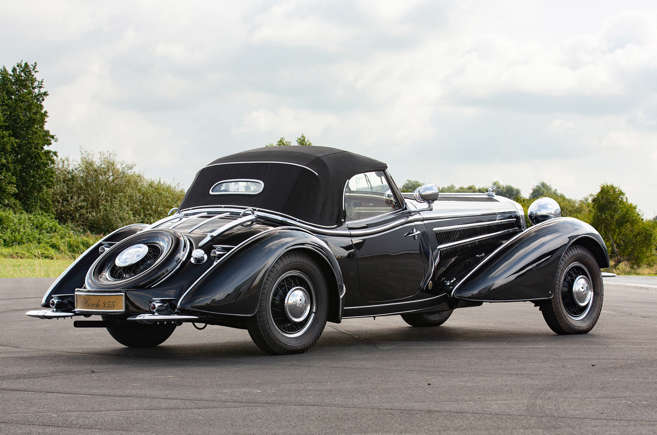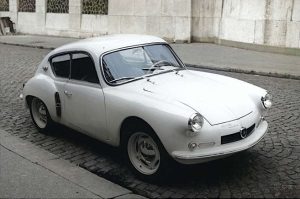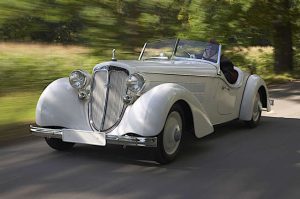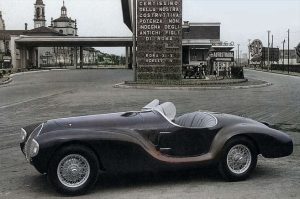Some best cars you’ve (probably) never heard of, but truly exist
It follows that some models worthy of your attention have passed you by, either because of where you live or because your interest in motoring history is healthy rather than obsessive.
To broaden your knowledge (if you feel it needs broadening), here are examples from each of 40 current or dormant manufacturers, listed in alphabetical order. It’s quite possible, of course, that you actually have heard of some of them, but the point is that it doesn’t matter if you haven’t. Nobody’s going to judge you for that:
Today’s Alpine A110 is well known, and so by extension is the earlier model of the same name, which was introduced in the 1960s and became the most successful rally car in the world in 1973.
The original A110 was actually the third Alpine. The first was the A106, a fibreglass-bodied, rear-engined sports car devised by Dieppe Renault dealer and amateur rally driver Jean Rédélé (1922-2007), who used the mechanicals of Renault’s first post-War car, the 4CV. By the standards of the mid to late 1950s, it was light, nimble and quick. Today, it can be seen as the foundation stone of the Alpine brand, that of course now encompasses a Formula 1 team.
Business mergers made the Audi Front possible. As its name suggests, this example of what would now be described as an executive car had front-wheel drive – a speciality of DKW, which took over Audi in 1928 – and was powered by a 2.0-litre (later 2.3-litre) straight-six engine developed by Wanderer, a companion brand of Audi following the creation of Auto Union in 1932.
The Front was introduced in 1933, and from then until 1938 it was the only car Audi produced.
This complicated title hides the identity of the first car designed and built from scratch under the direction of Enzo Ferrari (1898-1988), who was unable to use his own name for legal reasons. Most of the mechanical parts came from Fiat, and the engine was a 1.5-litre straight-eight.
Two examples were assembled, and both were entered in the 1940 Brescia Grand Prix sports car race, part of the Mille Miglia series. They were extremely fast, but mechanical failures meant that neither finished. Ferrari was later quoted as saying, “The experiment that started so brilliantly ended in failure, largely because the car had been built too hastily.”
Almost every article written about the earliest days of motoring includes a reference to the Benz Patent Motorwagen, which is usually (though disputably) referred to as the world’s first car. Far less attention is paid to the later Benz Velo, which is a pity. Officially known as the Velocipede, the Velo had four wheels compared with just three for the Patent Motorwagen, and was built for much longer and in far greater numbers.
There were several developments over the years, including increased power output and, from 1896, the option of pneumatic tyres. More than 1200 examples were built from 1894 to 1902, and this has led to the Velo being described as the first car ever to go into mass production.
While it seems freakishly unlikely today that BMW would ever build a tiny sports car with a rear-mounted 0.7-litre engine, it’s important to remember that in the 1950s the company was one step away from financial collapse, saved from complete disaster only by production of the Isetta bubble car.
The 700 came along at just the right time. This was an excellent little machine, backed up by very positive publicity due to its success in motorsport. It was so popular that BMW had to build nearly 190,000 examples between 1959 and 1965 to satisfy demand. If it hadn’t been for this car, BMW would probably be as well remembered now as, for example, Horch or Peerless.
Some cars have become obscure not because they were unsuccessful but because they were produced for a very short time. The Series 50 Super, based on the widely used General Motors C-body platform and powered by a 4.1-litre version of Buick’s Fireball straight-eight engine, is a case in point.
Average annual production is believed to have exceeded 100,000, but the car was available (with saloon, coupe and estate body styles) only in the 1940 and 1941 model years.
The Series 72 was contemporary with the Buick Series 50 Super but had an even shorter life, being introduced at the start of the 1940 model year and discontinued at the end of it.
It was a derivative of the Series 75, with the same 5.7-litre V8 engine and bodies made by Fleetwood, but its chassis was three inches shorter and it cost slightly less. Its short life suggested that it didn’t appeal to Cadillac customers, but it did leave a legacy – recirculating ball steering, available only in this model when it was in production, became standard across the range the following year.
Motoring enthusiasts the world over are familiar with famous Chevrolet nameplates like Camaro and Corvette, but few will have heard of the Yeoman. In its day, it was the cheapest and most sparsely equipped of the full-size Chevrolet station wagons.
If you wanted lots of space with no unnecessary frills, this was the car for you, and as such served a useful purpose. The idea was used for several models known as Brookwood, but the Yeoman itself was a brief flash in a dime store pan, being sold only in the 1958 model year.



